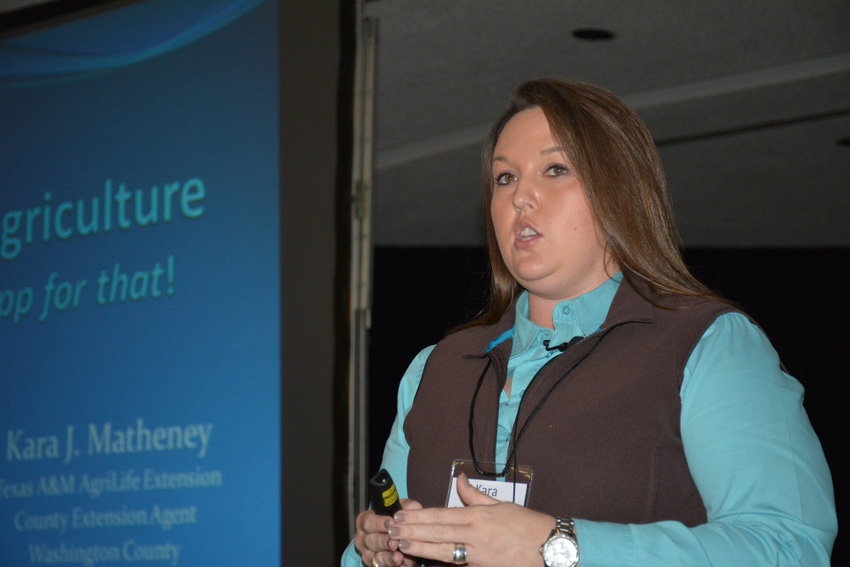
As recently as 15 years ago, when farmers took information to and from the field it was usually on paper—in a notebook, an Extension pamphlet, a pesticide label—and they stored it either in a shoebox on the dashboard of their pickup truck, in a metal file cabinet, or, after spending a few hours on the keyboard, on their office computers.
Farmers and ranchers looked to almanacs for historical data, printed crop production guides for in-season decisions, and budget print-outs to check breakeven figures. They even checked the back porch thermometer to see if they needed to wear a coat.
It was a paper first era of data collection and management.
No longer. “We have apps for that,” says Kara Matheny, Texas AgriLife Extension specialist in Washington County. Matheny, along with this writer, discussed “Apps for Agriculture,” during the opening session of the 28th annual Texas Plant Protection Association Conference in Bryan, Dec. 6.
Not only can producers find all that information on their office computers, Matheny says, most have it available in their pockets—on a smart phone or tablet.
Agriculture has developed applications in recent years that provide information on most any aspect of crop or livestock production—although Matheny admits that offerings for livestock remain on the light side.
As smart phones and apps became more common on farms and ranches, she perceived a need for more information about what was available, what was useful and what was just something that took up space on a smart phone home page. She’s developed and maintains a list of apps she has found useful for agriculture. That list is available here. http://extensionemployees.tamu.edu/resources/mobile-apps-catalog/.
AVAILABLE APPS
Those apps include Water Cost and Crop Cost apps from Texas Extension. As the names suggest, they provide information on how much an acre inch of water will cost on irrigated crop land, and the cost of production per acre. AquaPlant, she says, is useful for pond management. “AgMobile is another useful resource for agriculture,” she adds. She cites LeafSnap, BRIT and SoilWeb as other good ag related mobile apps. Others include weather apps, news and commodity apps, pest identification apps such as ScoutPro Corn, NutriAg, and ID Weeds. Sprayer and crop production apps are also available.
“We have easy access to apps for agriculture,” Matheny says. “They are available for both IOS (Apple) and Android systems, and most are free.”
Even the ones that require a fee, which is usually small, may have a “lite” version that is free to download. “You can try that one out and if it’s something you think you will use a lot, it may be worth paying for the premium version.
“Some of these are web-based but can be put on a smartphone home screen. They show up just like an app.”
Not all apps are equal, she warns. In fact, some may be misleading, inaccurate or simply not useful.
“Read the review on an app before downloading it,” she advises. “Make certain it’s functional and reliable. Know the source.”
Matheny also recommends checking the amount of data an app will use and how much the app will drain a battery. “Some data apps will run in the background, depleting battery life,” she says, “so make certain you close them out when you finish using them. Video apps, maps and any that use GPS use a lot of data.”
Smartphone apps, she adds, are taking the place of a “black notebook and a No. 2 pencil. We can perform in-field recordkeeping and have easy access to a lot of information.”
She says the list of apps she has compiled “is not exhaustive, but it’s a good start.”
This writer’s contribution was to offer some historical perspective on how information technology has evolved—from bulky chemical handbooks, paper maps, almanacs and “how to” publications, to apps that offer vast amounts of information with the touch of finger on a smart phone icon.
About the Author(s)
You May Also Like






